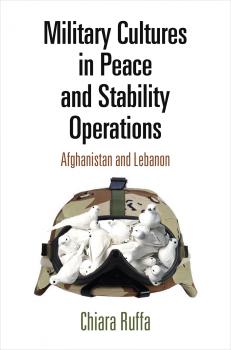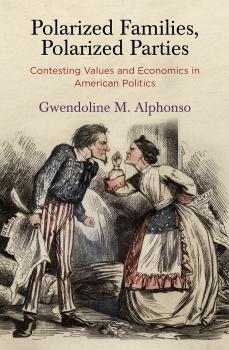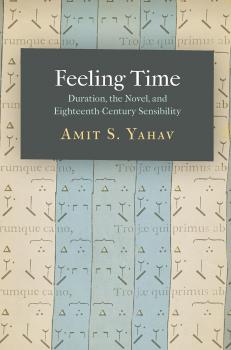ТОП просматриваемых книг сайта:
ЛИТМИР - LITMIR.BIZ - Электронная библиотека
Скачивание или чтение онлайн электронных книг.Аннотация
As of September 2017, the United Nations alone deployed 110,000 uniformed personnel from 122 countries in fifteen peacekeeping operations worldwide. Soldiers in these missions are important actors who not only have considerable responsibility for implementing peace and stability operations but also have a concomitant influence on their goals and impact. Yet we know surprisingly little about the factors that prompt soldiers' behavior. Despite being deployed on the same mission under similar conditions, various national contingents display significant, systematic differences in their actions on the ground. In Military Cultures in Peace and Stability Operations , Chiara Ruffa challenges the widely held assumption that military contingents, regardless of their origins, implement mandates in a similar manner. She argues instead that military culture—the set of attitudes, values, and beliefs instilled into an army and transmitted across generations of those in uniform —influences how soldiers behave at the tactical level. When soldiers are abroad, they are usually deployed as units, and when a military unit deploys, its military culture goes with it. By investigating where military culture comes from, Ruffa demonstrates why military units conduct themselves the way they do. Between 2007 and 2014, Ruffa was embedded in French and Italian units deployed under comparable circumstances in two different kinds of peace and stability operations: the United Nations Interim Force in Lebanon and the NATO mission in Afghanistan. Based on hundreds of interviews, she finds that while French units prioritized patrolling and the display of high levels of protection and force—such as body armor and weaponry—Italian units placed greater emphasis on delivering humanitarian aid. She concludes that civil-military relations and societal beliefs about the use of force in the units' home country have an impact on the military culture overseas, soldiers' perceptions and behavior, and, ultimately, consequences for their ability to keep the peace.
Аннотация
They helped conquer the greatest armies ever assembled. Yet no sooner had they tasted victory after World War II than American generals suddenly found themselves governing their former enemies, devising domestic policy and making critical economic decisions for people they had just defeated in battle. In postwar Germany and Japan, this authority fell into the hands of Dwight D. Eisenhower and Douglas MacArthur, along with a cadre of military officials like Lucius Clay and the Detroit banker Joseph Dodge. In Sovereign Soldiers , Grant Madsen tells the story of how this cast of characters assumed an unfamiliar and often untold policymaking role. Seeking to avoid the harsh punishments meted out after World War I, military leaders believed they had to rebuild and rehabilitate their former enemies; if they failed they might cause an even deadlier World War III. Although they knew economic recovery would be critical in their effort, none was schooled in economics. Beyond their hopes, they managed to rebuild not only their former enemies but the entire western economy during the early Cold War. Madsen shows how army leaders learned from the people they governed, drawing expertise that they ultimately brought back to the United States during the Eisenhower Administration in 1953. Sovereign Soldiers thus traces the circulation of economic ideas around the globe and back to the United States, with the American military at the helm.
Информация о книге
Автор произведения Grant Madsen
Аннотация
Аннотация
Polarized Families, Polarized Parties - Gwendoline M. Alphonso
American Governance: Politics, Policy, and Public LawАннотация
Struggles to define the soul of America roil the nation's politics. Debates over the roles of gays, lesbians, women, immigrants, racial and religious minorities, and disputes over reproductive and abortion rights serve as rallying points for significant electoral groups and their representatives in government. Although the American family lies at the core of these fierce battles, the alignment of family with social or cultural issues is only a partial picture—a manifestation of the new right's late twentieth-century success in elevating «family values» over family economics. Gwendoline Alphonso makes a significant contribution to the prevailing understanding of party evolution, contemporary political polarization, and the role of the family in American political development by placing family at the center of political and cultural clashes. She demonstrates how regional ideas about family in the twentieth century have continually shaped not only Republican and Democratic policy and ideological positions concerning race and gender but also their ideals concerning the economy and the state. Drawing on extensive data from congressional committee hearings, political party platforms, legislation sponsorship, and demographic data from the Progressive, post-World War II, and late twentieth-century periods in the United States, Polarized Families, Polarized Parties offers an intricate and sophisticated analysis of how deliberations around the ideal family became critical to characterizations of party politics. By revealing the deep historical interconnections between family and the two parties' ideologies and policy preferences, Alphonso reveals that American party development is more than a story of the state and its role in the economy but also, at its core, a debate over the political values of family and the social fabric it embodies.
Аннотация
Аннотация
Информация о книге
Автор произведения Constance Hoffman Berman
Жанр История
Серия The Middle Ages Series
Аннотация
Literary historians have tended to associate the eighteenth century with the rise of the tyranny of the clock—the notion of time as ruled by mechanical chronometry. The transition to standardized scheduling and time-discipline, the often-told story goes, inevitably results in modernity's time-keeper societies and the characterization of modern experience as qualitatively diminished. In Feeling Time , Amit Yahav challenges this narrative of the triumph of chronometry and the consequent impoverishment of individual experience. She explores the fascination eighteenth-century writers had with the mental and affective processes through which human beings come not only to know that time has passed but also to feel the durations they inhabit. Yahav begins by elucidating discussions by Locke and Hume that examine how humans come to know time, noting how these philosophers often consider not only knowledge but also experience. She then turns to novels by Richardson, Sterne, and Radcliffe, attending to the material dimensions of literary language to show how novelists shape the temporal experience of readers through their formal choices. Along the way, she considers a wide range of eighteenth-century aesthetic and moral treatises, finding that these identify the subjective experience of duration as the crux of pleasure and judgment, described more as patterned durational activity than as static state. Feeling Time highlights the temporal underpinnings of the eighteenth century's culture of sensibility, arguing that novelists have often drawn on the logic of musical composition to make their writing an especially effective tool for exploring time and for shaping durational experience.
Аннотация
Suburban sprawl has been the prevailing feature—and double-edged sword—of metropolitan America's growth and development since 1945. The construction of homes, businesses, and highways that were signs of the nation's economic prosperity also eroded the presence of agriculture and polluted the environment. This in turn provoked fierce activism from an array of local, state, and national environmental groups seeking to influence planning and policy. Many places can lay claim to these twin legacies of sprawl and the attendant efforts to curb its impact, but, according to John H. Spiers, metropolitan Washington, D.C., in particular, laid the foundations for a smart growth movement that blossomed in the late twentieth century. In Smarter Growth , Spiers argues that civic and social activists played a key role in pushing state and local officials to address the environmental and fiscal costs of growth. Drawing on case studies including the Potomac River's cleanup, local development projects, and agricultural preservation, he identifies two periods of heightened environmental consciousness in the early to mid-1970s and the late 1990s that resulted in stronger development regulations and land preservation across much of metropolitan Washington. Smarter Growth offers a fresh understanding of environmental politics in metropolitan America, giving careful attention to the differences between rural, suburban, and urban communities and demonstrating how public officials and their constituents engaged in an ongoing dialogue that positioned environmental protection as an increasingly important facet of metropolitan development over the past four decades. It reveals that federal policies were only one part of a larger decision-making process—and not always for the benefit of the environment. Finally, it underscores the continued importance of grassroots activists for pursuing growth that is environmentally, fiscally, and socially equitable—in a word, smarter.
Информация о книге
Автор произведения John H. Spiers










